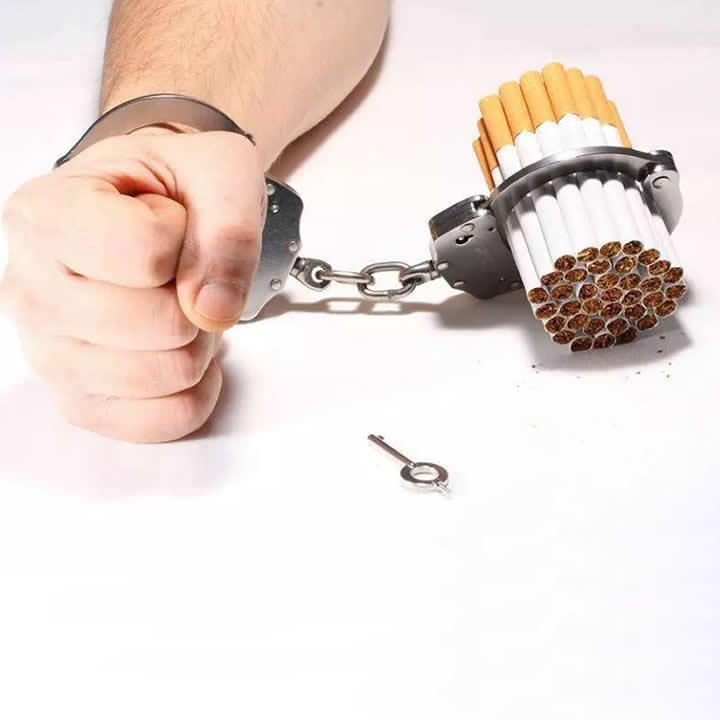Most people who smoke want to be free from their addiction, and almost half of the snus. Are you one of them? You probably know many who have already stopped and maybe you ask yourself how they did to succeed. Many will say that they did nothing special. They did not use any aids and no particular support, they just decided and were surprised that it was easier than they thought. There is much you can do that increases the chance of success. Here you get advice and tips.
Make three decisions
- Do you want to quit?
To make it easier for you, you need to be convinced that the benefits of ending up with tobacco are greater than the possible benefits you find that smoking/sniffing gives you. Think about what you would gain from quitting, for example, don’t worry about getting sick, smelling and looking fresher, saving money or not having to feel dependent. How important you experience the reasons for quitting means the most for how it should go.
- When should you stop?
Once you have decided to quit, decide directly for a stop day. Studies show that smokers who quit abruptly have almost twice as much chance of succeeding compared to those who try to quit by decreasing the number of cigarettes gradually. Do not wait too long to determine the stop day, because the risk is then great that you lose your motivation. It is common to want one or a couple of weeks to prepare for the tobacco stop, but some choose to quit immediately.
- Get yourself support from the environment.
For most, it is helpful to tell about the tobacco stop to get support and encouragement from the surroundings. Others choose to say nothing. Think about what’s best for you.
After the decision making phase here comes a crucial phase having eight more steps:
- Strengthen motivation.
Write down why you want to quit to strengthen your motivation. Save the text. If the craving would make you falter during the first time after you quit, it is good to pick up what you have written to remind you why you want to quit.
- Register your tobacco habit.
A good way to get a grip on your smoking is to record during a few or a few days when you smoke feeling you have for example, tired, stressed, bored and how the cigarette tastes. When you know the situations in which you usually use tobacco, you can, up to the tobacco stop, think about what to do instead in these situations when you have stopped. Note if there are times when you never smoke. These situations can be helpful when you have stopped and want to escape the nicotine suction.
- Prevent relapse
The tobacco is a difficult temptation if you have it within easy reach. Most people throw away everything reminiscent of tobacco in the evening and then wake up to their first tobacco-free day. Some people use other substitutes like vaping which can help in quitting cigarettes gradually in these hard situations. Wide range of vape mod is available in stores. You can Buy Ccell battery at vapeactive.com here. Vaping can give you relief in this harsh process of leaving smoking quickly.
- Stop completely on the stop day
Stop completely and do not take a single cigarette or bite. Eat properly to avoid hunger, which can be experienced as nicotine suction. Think about what you eat if you want to avoid weight gain. Physical activity can help reduce nicotine suction and withdrawal and counteract weight gain. Do nice things, stay busy with something positive. Keep in mind that nicotine suction is a sign that the body is releasing itself from nicotine dependence.
- Breaking the habit
The lack of tobacco causes you to get nicotine suction. This is most noticeable in situations where you used to use tobacco before. There are many tricks that make it easier to:
- Avoid what attracts to smoking, such as alcohol or coffee, to stand next to a person who smokes to look at the tobacco in the store.
- Change habits, such as morning routines, what you eat for breakfast, what you do in the evening, and when you have stressful or boring.
- Use toothpicks and chewing gum. It can deaf the void that can be experienced in the mouth. Many snuffers put something else under the lip at the beginning, for example, a small piece of raw ginger.
- Difficult Situations
Think about in advance which situations can trigger your tobacco demand. For each such situation, consider what you can do instead of taking tobacco. Examples of situations are party, stress and feeling alone or depressed.
- Stay busy
It is good if you can be active and move more than usual. Plan jobs that get you in a good mood and that are not associated with tobacco use. Bio, swimming pool and library are examples of places where you have not previously smoked. For smokers, it can be the gym, bed, and shower.

